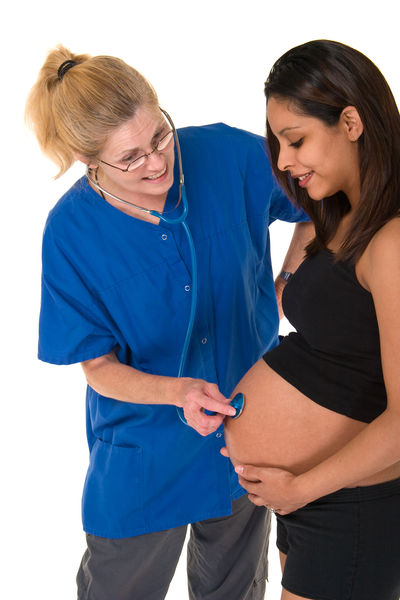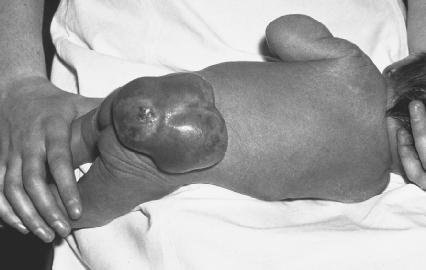Spina Bifida - Diagnosis

The sac formed as a result of spina bifida may be quite large or very small. In the mildest cases, it may be confused with a tumor. When the sac is not obvious, other clues to the disorder include the presence of a birthmark on the spine (called a port wine stain) or growth of hair in the injured region. Babies with spina bifida may also exhibit weak muscles and poor reflexes.
Spina bifida is one of many genetic disorders. Such disorders develop before a child is ever born. What difference would it make if parents knew that their child had a genetic disorder before the child was born?
Until recently, there was no point in asking that question. Doctors had no way of knowing whether or not a baby would be born with a genetic disorder.
But that situation has changed. Today, it is possible to identify many genetic disorders while a fetus is still in the womb. For example, a small sample of the fluid surrounding the fetus can be withdrawn. Certain tell-tale "markers" in the fluid indicate whether or not a genetic disorder is present. Today, parents can know in advance whether or not their baby will have spina bifida.
How should parents use this knowledge? Some people want to have their baby born, no matter what health problems it may have. Other people feel differently. They do not want to subject their child to even a few weeks or days of pain and suffering.
Genetic testing can be an invaluable source of information for parents. But it can also raise some of the most difficult questions they will ever have to answer.
Tests are available for confirming the presence of spina bifida. One such test is a myelograph. In a myelograph, a dye is injected in the area around the spinal cord. The spinal cord is then observed with an X ray or a computed tomography (CT) scan, which can create a picture of internal organs. Either test will show the structure of the spinal cord in detail and gaps in the spine usually show up clearly.
Spina bifida can now be diagnosed before birth. The mother is given a blood test for a substance known as alpha-fetoprotein (AFP). AFP is always present in the blood of a pregnant woman but the presence of an abnormal fetus causes an increase in the level of AFP.
Additional tests can determine whether the abnormality involves the neural tube. During an amniocentesis (pronounced AM-nee-oh-sehn-TEE-siss) test for instance, fluid surrounding the fetus is removed and examined in order to gain further information as to the likelihood of a neural tube defect.
Finally, the fetus can be examined by ultrasound. In an ultrasound test, a sound wave is sent into the pregnant woman's womb. The sound wave bounces off the fetus. Its reflection forms a picture of the fetus that can be studied for the presence of neural tube defects. The combination of blood

tests, amniocentesis, and ultrasound tests can now diagnose over 90 percent of all neural tube defects.

Comment about this article, ask questions, or add new information about this topic: